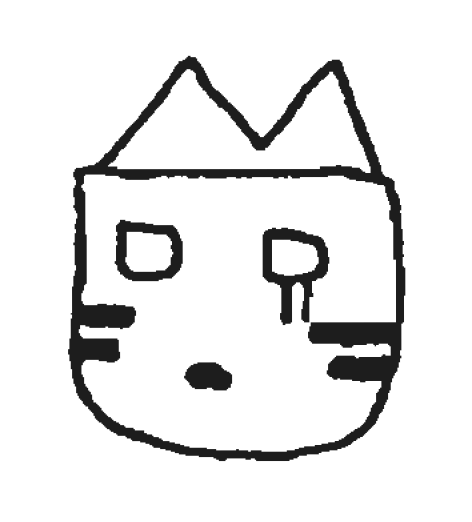Glossary
What does that mean?
Archaeology is full of jargon, or special words used by professionals in their jobs. Sometimes understanding new jargon can feel like learning another language! Use the glossary below, and the hover feature on words throughout the website, to help you decipher technical archaeology jargon.
A.D./C.E. A.D. and C.E. are Western timeline terms. A.D. means “Anno Domini” or “in the year of the Lord” while C.E. means “Common Era.” A.D. and C.E. count up from year one.
Agriculture
Ancestor
Archaeological record The archaeological record is the physical (material) evidence about past peoples. Within the record exists all the objects that past peoples have left behind.
Archaic period The Archaic tradition covers a vast swath of time between the end of the Paleoindian tradition and the appearance of ceramics around A.D. 500. The archaic can be broken down into three distinct periods, Early 7,000-3,200 B.C., Middle (3,200-1,800 B.C.), Late (1,800 B.C.- 500 A.D.). The Archaic period is often defined by the adoption of horticulture in addition to peoples continuing to be mobile on the landscape.
B.C./B.C.E. B.C. and B.C.E are Western timeline terms. B.C. means “Before Christ” while B.C.E. means “Before Common Era.” These terms are often used interchangeably and both refer to the period before year one.
Burned rock midden A large dense concentration, often mounded, of fire cracked rock (FCR). Burned rock middens are usually associated with large scale plant processing, like agave roasting. Often, other artifacts like pieces of stone tools are also present in burned rock middens. Related features: Ash/Charcoal Stain, Fire-Cracked Rock Concentration, Hearth, Mescal Pit, Ring Midden, Roasting Pit.
Bedrock mortar A pecked or ground concavity in a large boulder or outcrop.
Caliche
Carbon 14 dating This is a method of dating the age of organic materials by measuring the amount of carbon-14 present within an organic item. This type of dating is relatively accurate up to 60,000 years ago.
Carrying-capacity The number of people and/or living organisms that a specific region can support while still keeping all environmental functions stable.
Cave shelter
Ceramics Bowls, jars, ollas, figurines, and any other object that is constructed from clay and fired to become a hard and sometimes brittle material. Ceramics can be decorated (painted or have physical patterns carved or etched into them) or undecorated (typically called “plainwares”).
Cimiento construction
Coprolite Fossilized feces of human or animal.
Corrugated wares A type of ceramic that is made by coiling up clay, manipulating those coils to produce a rough surface and also provides more surface area for heating when used for cooking.
Cultigen
Debitage Stone debris that results from making chipped stone tools.
Decedent Communities
Decorated wares
Foraging
Formative period Formative is a term commonly applied by archaeologists to the ceramic periods of the Jornada Mogollon region and is commonly synonymous with the Jornada Mogollon culture. The Formative Period is typically defined by a change in ceramic forms and styles, as well as the adoption of agriculture at some sites. The Formative Period is broken down into Early Formative (200-1100 A.D.) and Late Formative (1100-1450 A.D.) Periods.
Habitation pit
Haft A handle of a tool or weapon, seen on axes and knives. Shaped stones are attached to the handle in what is known as the hafting process.
Horticulture Small scale planting and harvesting of cultivated foods. Horticultural practice supports a group’s survival, while they continue to rely mainly on hunting and gathering.
Hunting camp
Kiva A circular or rectangular ceremonial structure. May be subterranean or part of a surface roomblock. Can be used for excavated and unexcavated features if there is reasonable certainty in interpretation of surficial remains. Component validation: prehistoric ceramic components and historic.
Lithic
Mano A stone used in grinding, usually alongside a metate. Manos can be one-handed (round) or two-handed (oval).
Masonry room block
Mesa
Metate A flat grinding surface, used with a mano. Food or minerals are laid on the mano and ground into the surface using a hand-held mano. Metates come in different shapes and sizes, and are often described based on the grinding activity that was conducted upon them. Metate types include trough, basin, concave, and flat.
Nomadic
Ochoa wares “Ochoa” refers to a group of people living in southeastern New Mexico between A.D. 1300-1450, who invented a pottery style unique to the region. Ochoa ware ceramics include Ochoa Indented, Chupadero Black-on-white, Rio Grande glaze Wares, Lincoln Black-on-red, and many more.
Paleoindian period The Paleoindian tradition is best known from assemblages of flaked stone spears and highly mobile hunting and gathering practices. They are also well known for hunting large mega-fauna (Mammoth, Bison, Giant Sloth, etc.). The Paleoindian Period can be broken down into early (11,500 B.C.- 10,800 B.C.), middle (10,800 B.C.- 9,800 B.C.), and late (9,800 B.C. -7,000 B.C.).
Petroglyph An image or series of images scratched, pecked, or scraped into a rock surface.
Pictograph An image or series of images painted in pigment onto a rock surface.
Pithouse A habitation structure built entirely or partially underground.
Plain wares
Projectile point A stone spear or arrow point.
Quarry site
Residential camp
Residue analysis A chemical analytical process where a sample of organic materials chemical makeup is defined.
Ring midden A generally donut-shaped or concentric burned rock midden. Used for roasting plants like mescal.
Rock-grid garden
Sedentary
Semi-sedentary
Sherd A broken fragment of a ceramic pots, jars, plates, bowls, etc.
Stone tool Any tool that is made out of stone, including chipped stone tools (scrapers, projectile points, biface) and ground stone tools (manos and metates).
Subsistence strategies
Tipi ring A circular pattern left when a tipi is dismantled, often in the form of small to medium size rocks in a circle.
Village site
Wicki-up A short-term habitation constructed of matting, grass, or bark overlaying a wooden frame.
